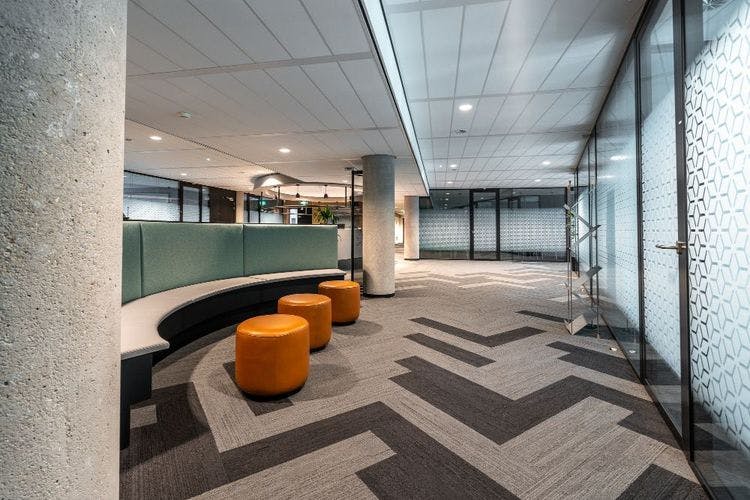The bustling streets of India teem with innovation and dynamism, and this spirit is increasingly reflected in the evolving landscape of Indian office design.
When you picture an Indian Office, what do you see?
Dusty cabinets, individual desks for everyone, tall ceiling fans that rattle while they spin slowly, a tea boy going around, filling everyone’s cups?
Well, gone are those days. Today, Indian offices are embracing a new era of design, one that seamlessly blends functionality and aesthetics.
This shift is driven by a growing understanding of how well-designed workspaces foster employee productivity, creativity, and overall well-being.
The Shift in Indian Office Design
Traditionally, Indian offices were often defined by a hierarchical structure, characterized by closed-off cabins for senior management and common bull-pen seating plans with individual desks for non management employees.
This hierarchical layout limited interaction and collaboration between employees because everyone was either bound to their own desk or cubicle. This hindered the flow of ideas and innovation. However, a new wave of design thinking is shaping modern Indian offices.
This shift embraces:
Open Floor Plans: Open floor plans create a sense of transparency and encourage collaboration by replacing the triangular grids of individual desks. The shared and linear seating arrangement allows for better visual communication, fostering spontaneous interactions and knowledge sharing among employees.
Collaborative Workspaces: Modern offices now incorporate collaborative areas with comfortable seating, writable surfaces, break rooms and movable furniture. These spaces encourage team brainstorming, project discussions, and social interaction, fostering a more collaborative and dynamic work environment.
Employee-Centric Design: Today's Indian office design prioritizes employee needs and well-being. This includes features like ergonomic furniture, modular workstations, and designated relaxation zones. Additionally, incorporating biophilic design that brings in natural light and greenery indoors, creates a healthier and more invigorating work environment.
Case Studies: A Glimpse into Indian Design Innovation
- The Vibrant Workplace of Zomato, Gurgaon: This leading food delivery company's office embodies India's rich cultural heritage. This space was designed by Studio Lotus and features vibrant colors, traditional Indian patterns, and handcrafted furniture. The office also boasts themed meeting rooms inspired by iconic Indian cities, fostering a sense of cultural and culinary pride and belonging among employees.
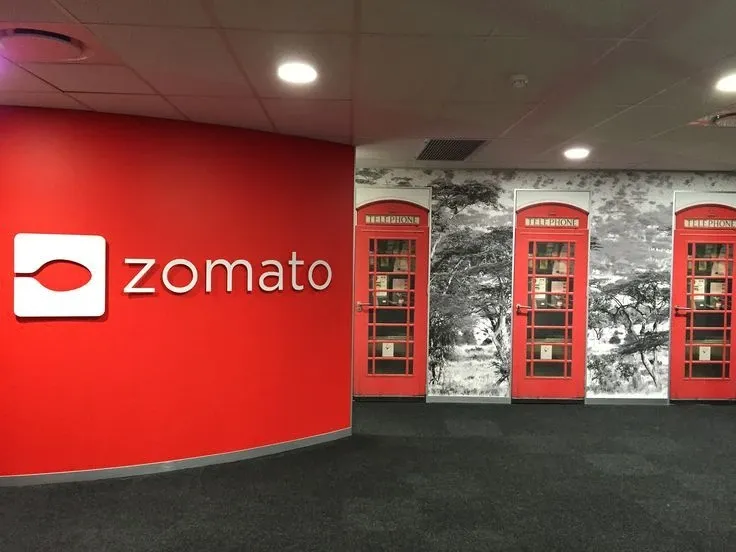
- The Sustainable Oasis of Godrej Green Building, Mumbai: This office has been designed by RSP Design Consultants, with sustainability in mind. The building features innovative features like a double-skin facade that minimizes heat gain while maximizing natural light. Additionally, this space heavily integrates biophilic design in the spirit of sustainability, with lush greenery and indoor water features, offering a refreshing and calming environment for employees.
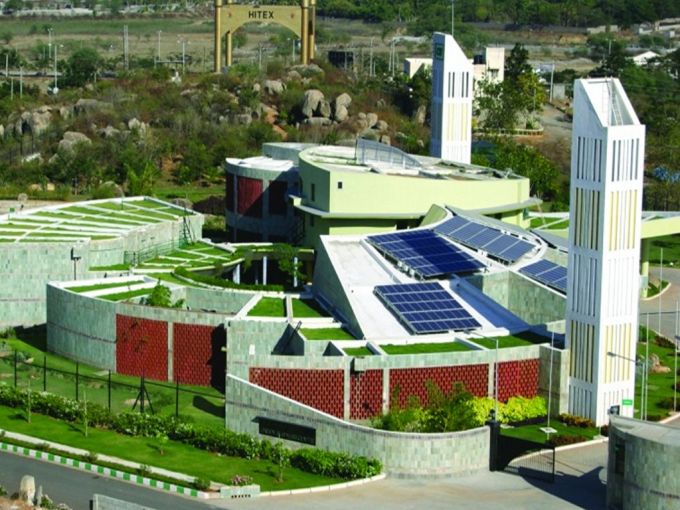
- The Collaborative Hub of WeWork BKC, Mumbai: This co-working space by WeWork, India exemplifies the importance of flexibility in modern office design and embodies the core ideals of WeWork as a company with a touch of the Indian flair. The space features a variety of work zones, from individual workstations to dedicated meeting rooms and collaborative lounges. This allows individuals and teams to choose the space best suited to their needs, fostering a dynamic and adaptable work environment.
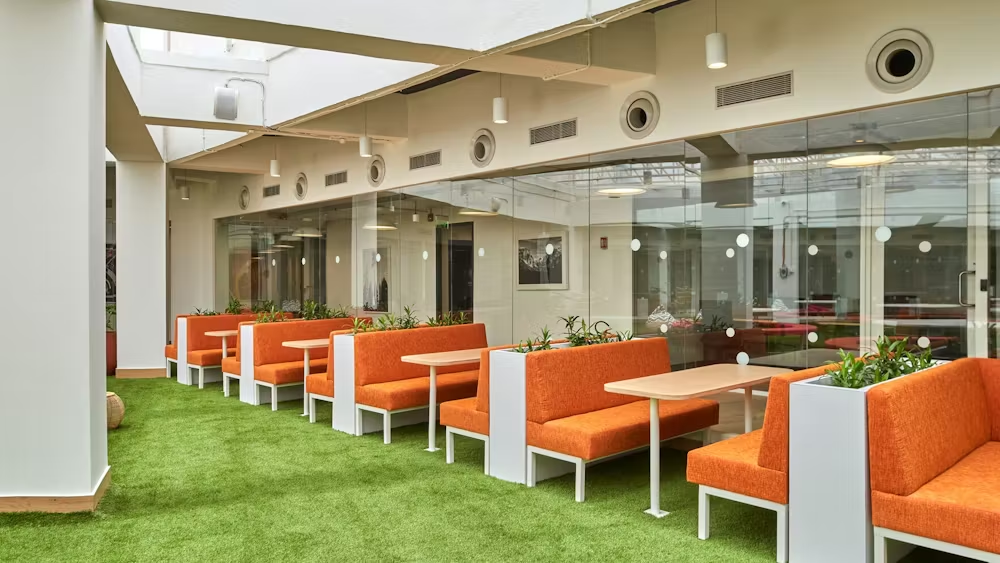
Cultural Sensitivity in Design
India's diverse cultural tapestry is increasingly reflected in modern office design, adding a unique and vibrant touch to workspaces. Some offices incorporate local materials like bamboo and terracotta, while others showcase traditional artwork and textile patterns.
This cultural sensitivity and pride not only creates a visually appealing environment but also reinforces a sense of community and belonging among employees.
The Role of Flexibility in Modern Indian Office Design:
The rise of remote work and hybrid work models has redefined the modern workforce. To adapt to this changing landscape, Indian office design concepts are quickly embracing principles of dynamic and customizable design.
This involves creating adaptable workspaces that can be easily modified to accommodate different work styles and tasks. This may include:
- Modular furniture: Chairs, desks, and whiteboards that can be easily rearranged to create different work zones.
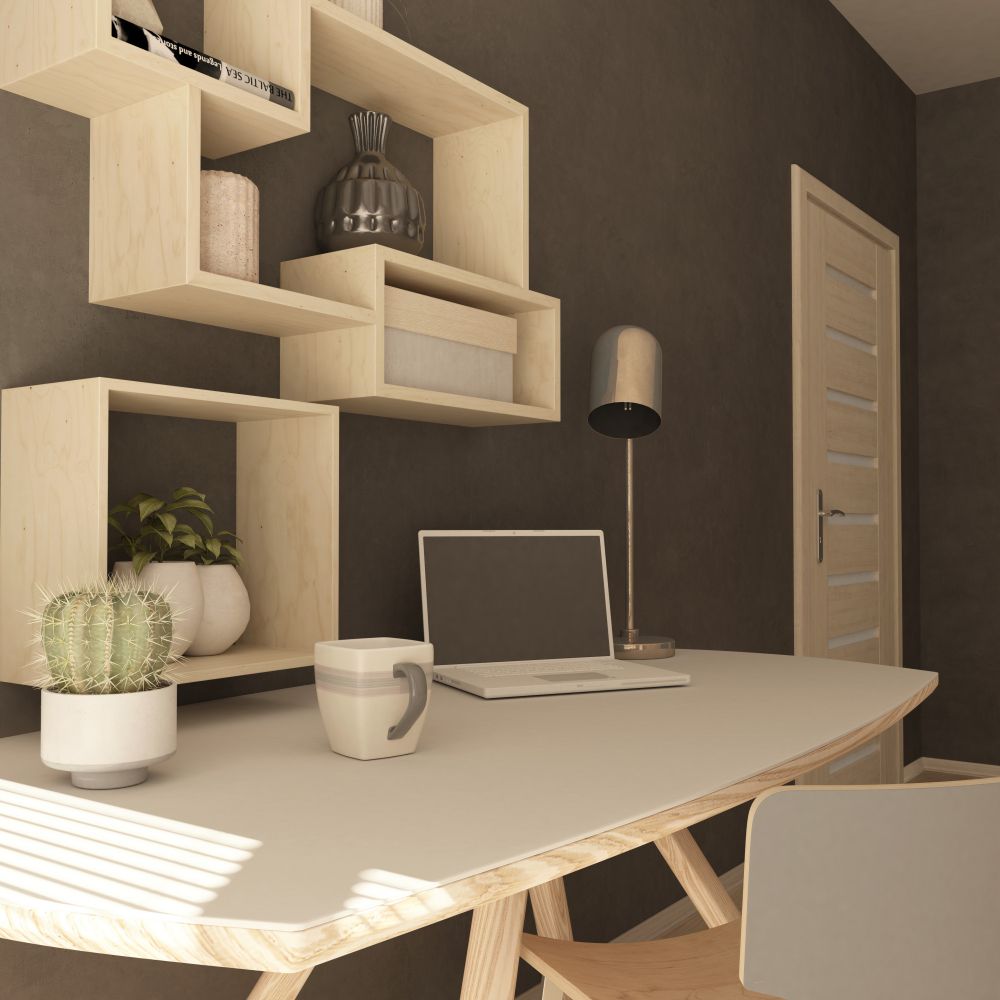
- Modular walls: Walls that can be moved or removed to create flexible meeting rooms or collaboration areas.
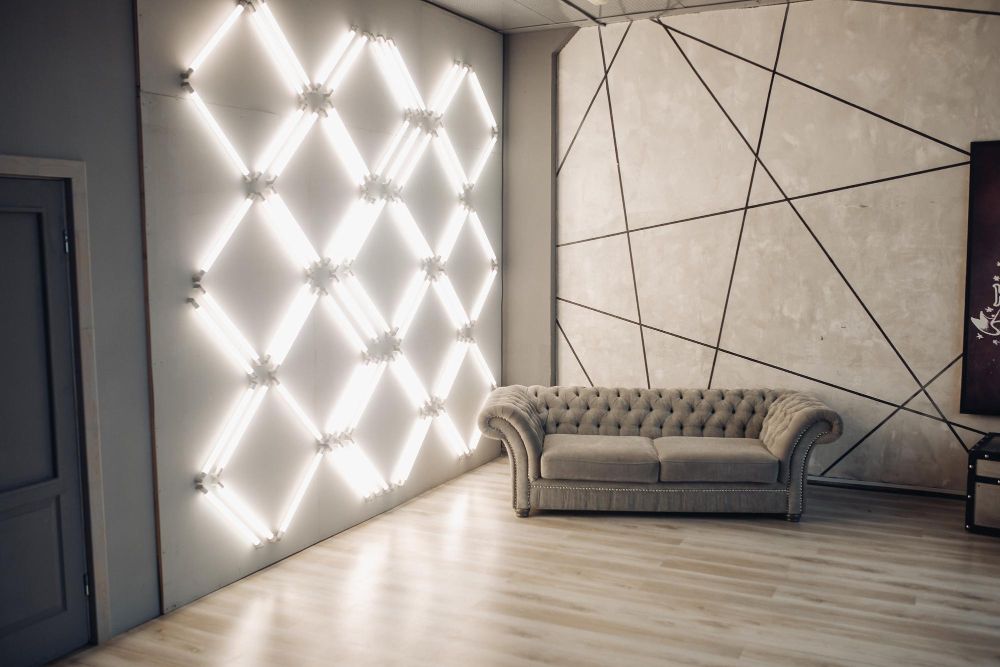
- Technology integration: Seamless integration of technology throughout the office space to facilitate collaboration and communication, regardless of location.
By embracing flexible design, Indian offices can cater to the diverse needs of their modern workforce and foster a sense of ownership and control over their work environment.
Sustainability and Wellness in Indian Office Design
Sustainability and employee well-being are no longer peripheral concerns but integral aspects of modern Indian office design. Companies are increasingly incorporating elements such as:
Eco-friendly materials: Using recycled materials, sustainably sourced wood, and energy-efficient lighting fixtures helps reduce the office's environmental footprint.
Natural ventilation and lighting: Utilizing natural light and ventilation not only reduces energy consumption but also creates a healthier and more invigorating work environment.
Biophilic design: Incorporating plants, natural textures, and water features into the office space helps to improve air quality, reduce stress levels, and enhance employee well-being.
By prioritizing sustainability and wellness in design, companies can create a responsible and healthy work environment that fosters employee well-being and promotes a positive work culture.
Conclusion
The evolution of Indian office design reflects the changing aspirations and needs of the modern workforce. By embracing innovation and incorporating features that prioritize functionality, cultural sensitivity, employee well-being, and sustainability,
Indian companies are paving the way for a future of work that is not only productive but also enriching and inspiring. This commitment to creating inspiring and functional work environments positions India as a leader in shaping the future of workplaces globally, as we not only embrace the modernity of the new office design but perfect it by adding an essence of cultural pride to it.
